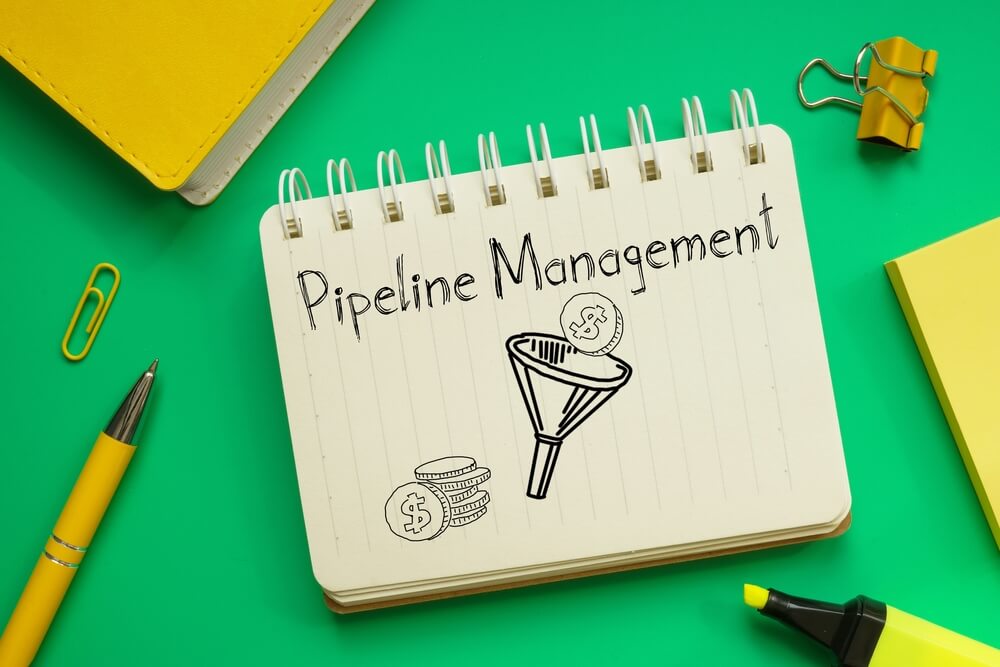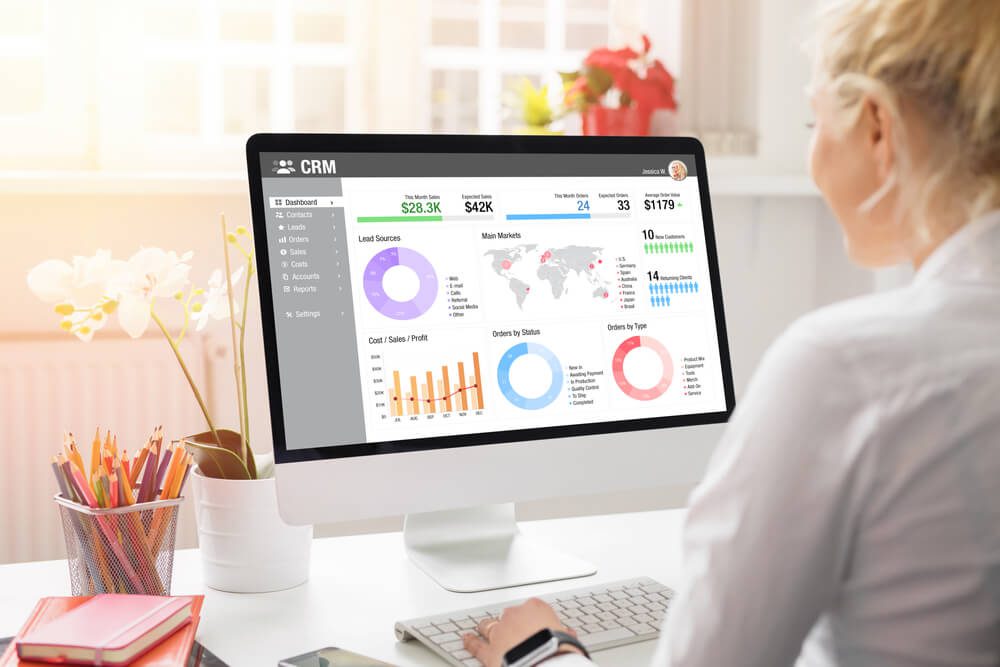
What Are 5 Best Practices for Sales Pipeline Management?
Generating sales takes time. Make it more efficient with effective sales pipeline management that guides prospects in their customer journey. Hiring a fractional sales management services agency further improves the process with strategic revenue and marketing insights.
This article covers the five best practices for sales pipeline management:
 Lead qualification involves evaluating leads based on specific criteria and moving only qualified ones to the next stage of the sales funnel. It lets you determine and decide which prospects are conversion-ready. This way, you can target the right people and focus your sales and marketing tactics on them.
An effective lead qualification process also promotes a healthy sales pipeline. It lets you prioritize only qualified leads and allocate resources to them.
Employ the MEDDPICC as a lead qualification methodology for your sales pipeline management:
Lead qualification involves evaluating leads based on specific criteria and moving only qualified ones to the next stage of the sales funnel. It lets you determine and decide which prospects are conversion-ready. This way, you can target the right people and focus your sales and marketing tactics on them.
An effective lead qualification process also promotes a healthy sales pipeline. It lets you prioritize only qualified leads and allocate resources to them.
Employ the MEDDPICC as a lead qualification methodology for your sales pipeline management:
 Technology is vital in improving business value and sales methods. For example, customer relationship management (CRM) and automation tools enhance data accuracy, work efficiency, and productivity.
More organizations rely on CRM, a market that could achieve a compound annual growth rate (CAGR) of 13.9% and a size of $163.16 billion by 2030. They use the platform to boost the user experience by centralizing lead and customer management.
On the other hand, the global sales force automation (SFA) software market could grow from $6.86 billion in 2022 to $18.27 billion by 2031 at an 11.5% CAGR. SFA is a commercial approach to automating processes and eliminating most manual tasks. This is beneficial in optimizing and accelerating sales.
Both CRM and automation tools more efficiently help you perform the following sales activities:
Technology is vital in improving business value and sales methods. For example, customer relationship management (CRM) and automation tools enhance data accuracy, work efficiency, and productivity.
More organizations rely on CRM, a market that could achieve a compound annual growth rate (CAGR) of 13.9% and a size of $163.16 billion by 2030. They use the platform to boost the user experience by centralizing lead and customer management.
On the other hand, the global sales force automation (SFA) software market could grow from $6.86 billion in 2022 to $18.27 billion by 2031 at an 11.5% CAGR. SFA is a commercial approach to automating processes and eliminating most manual tasks. This is beneficial in optimizing and accelerating sales.
Both CRM and automation tools more efficiently help you perform the following sales activities:
- Regularly review and update the sales pipeline.
- Implement effective lead qualification processes.
- Prioritize and segment leads.
- Use customer relationship management (CRM) and automation tools.
- Consistently train and communicate with the sales team.
Need some direction for increasing sales? Watch this video to learn what DAP can do for you!
1. Regularly Review and Update the Sales Pipeline
The sales pipeline covers all the stages that potential customers go through, from lead generation to sales conversion. Review and update it when necessary. Why? The pipeline evolves as the market changes. Uninterested and indifferent consumers become curious prospects who eventually move to the next sales funnel stage and successfully convert to sales. Optimize the sales stages with these ideas:- Lead prospecting involves identifying people interested in your business and what you offer. Attract more leads with branding, marketing, or advertising.
- Lead qualification entails evaluating and scoring leads to reveal the consumer needs and intent. Apply criteria to filter and prioritize sales-ready prospects.
- Sales outreach is contacting qualified leads to promote your brand and offer your products or services. Personalize your strategies to resonate with the audience.
- Sales negotiation requires prompt and effective responses to prospective customers’ questions, requests, and concerns. Respond through email outreach to negotiate the terms and conditions.
- Sales closing is the most crucial part of the process. Show them the actual value of your offer to motivate them to buy your products or hire your services.
2. Implement Effective Lead Qualification Processes
 Lead qualification involves evaluating leads based on specific criteria and moving only qualified ones to the next stage of the sales funnel. It lets you determine and decide which prospects are conversion-ready. This way, you can target the right people and focus your sales and marketing tactics on them.
An effective lead qualification process also promotes a healthy sales pipeline. It lets you prioritize only qualified leads and allocate resources to them.
Employ the MEDDPICC as a lead qualification methodology for your sales pipeline management:
Lead qualification involves evaluating leads based on specific criteria and moving only qualified ones to the next stage of the sales funnel. It lets you determine and decide which prospects are conversion-ready. This way, you can target the right people and focus your sales and marketing tactics on them.
An effective lead qualification process also promotes a healthy sales pipeline. It lets you prioritize only qualified leads and allocate resources to them.
Employ the MEDDPICC as a lead qualification methodology for your sales pipeline management:
- Metrics: Do your leads resemble your target customers’ personal, behavioral, and psychological demographics? Set proper criteria for your buyer persona (an ideal representation of your customers).
- Economic buyer: Do they have the money to buy your products or hire your services? Check the financial capabilities of your prospects.
- Decision criteria: Do these prospects need your products or services in any way? Identify what customers look for and if these match your offers.
- Decision process: Does your process prevent them from taking action? Examine your leads’ decision-making process regarding buying products or hiring services.
- Paper process: What are the terms and conditions to fulfill to complete the sales process? Put everything in writing.
- Identify their pain: Can you provide the real solutions that the market needs? Understand the consumers’ pain points and match your value proposition to them.
- Champion: Do you offer real value to these potential customers and see them win through your offers? Empower your prospects to become consumer champions.
- Competition: Can you offer the best value to beat the competition? Assess your customer needs and what your competitors offer.
3. Prioritize and Segment Leads
Lead segmentation entails examining and categorizing prospects into different groups according to certain attributes or specific criteria. This aligns your sales and marketing initiatives and strategies with each group. Fractional sales management services improve it with advanced personalized tactics. It also streamlines the sales pipeline because you optimize your strategies according to what works for each segment. Consider segmenting your leads based on the following criteria:- Personal demographics: Sort leads according to their age, gender, location, income, and employment or business.
- Psychographic factors: Use psychological criteria such as values, interests, lifestyles, and attitudes, to determine their segments.
- Behavioral demographics: Check consumer behaviors based on website activities, content engagement, and social media interactions to effectively categorize them.
- Buyer personas: Develop different personas and fit leads to each based on their pain points, challenges, preferences, goals, and motivations.
- Lead sources: Sort leads according to how you acquire them, whether through the website, email, or social media.
- Lifecycle stages: Categorize leads based on where they are in the customer journey such as awareness, consideration, or decision.
- Lead scores: Assign prospects with scores based on their engagement levels with your business.
4. Use Customer Relationship Management (CRM) and Automation Tools
 Technology is vital in improving business value and sales methods. For example, customer relationship management (CRM) and automation tools enhance data accuracy, work efficiency, and productivity.
More organizations rely on CRM, a market that could achieve a compound annual growth rate (CAGR) of 13.9% and a size of $163.16 billion by 2030. They use the platform to boost the user experience by centralizing lead and customer management.
On the other hand, the global sales force automation (SFA) software market could grow from $6.86 billion in 2022 to $18.27 billion by 2031 at an 11.5% CAGR. SFA is a commercial approach to automating processes and eliminating most manual tasks. This is beneficial in optimizing and accelerating sales.
Both CRM and automation tools more efficiently help you perform the following sales activities:
Technology is vital in improving business value and sales methods. For example, customer relationship management (CRM) and automation tools enhance data accuracy, work efficiency, and productivity.
More organizations rely on CRM, a market that could achieve a compound annual growth rate (CAGR) of 13.9% and a size of $163.16 billion by 2030. They use the platform to boost the user experience by centralizing lead and customer management.
On the other hand, the global sales force automation (SFA) software market could grow from $6.86 billion in 2022 to $18.27 billion by 2031 at an 11.5% CAGR. SFA is a commercial approach to automating processes and eliminating most manual tasks. This is beneficial in optimizing and accelerating sales.
Both CRM and automation tools more efficiently help you perform the following sales activities:
- Lead capture: The CRM tool securely stores lead and customer data. It also automatically records information from online channels or web sources.
- Lead segmentation: CRMs organize data and categorize leads in one place. AI-powered automation segments leads based on set criteria or patterns in real time.
- Lead qualification: The CRM system organizes data for lead qualification. Automated lead scoring makes the entire process more efficient.
- Lead nurturing: Automated tools integrated into the CRM system enable you to schedule and deliver personalized content, emails, and follow-ups.
- Sales outreach: The CRM system tracks and records email communications with prospects. Automation sends personalized email sequences to prospective customers when they sign up for the mailing list.
- Customer follow-up: The CRM platform contacts leads and sends follow-up messages automatically or on your preferred schedule.
- Sales forecasting: CRM analytics assist in sales forecasting and business reporting. The same holds for automation that predicts sales opportunities based on historical data patterns and trends.
- Sales presentation: The CRM platform creates sales content and stores presentation materials. Automation schedules meetings for pitches and sends follow-ups after.
5. Consistently Train and Communicate with the Sales Team
The most effective sales efforts align with the market, but the real success lies in your team. They are responsible for connecting with consumers and converting leads into revenue. A HubSpot study reveals that 54% of salespeople claimed that selling was more difficult in 2023. Fractional sales management services help you avoid or minimize challenges with regular training and constant communication. In particular, they:- Set up regular meetings with your sales team to share pipeline updates and valuable ideas and address potential conversion issues.
- Have one-on-one sessions with each team member to identify and address areas for improvement, helping them generate more leads and convert sales.
- Conduct regular training with the whole team. Doing so enhances sales knowledge, improves pitches, and hones communication, negotiation, and sales skills.
- Create a feedback loop to empower the team in making informed decisions and improving sales processes.
- Encourage peer-to-peer learning. New members can learn directly from the team’s sales experts to promote a culture of collaboration and support in the workplace.
- Leverage digital tools and communications technologies, such as CRM and artificial intelligence (AI), for precise, prompt, and effective communication. Use different channels such as phone, email, chat, social media, and SMS.
Summing Up
Effective sales pipeline management is vital to consistently closing deals. It guides your initiatives and processes, from lead prospecting to actual conversion, and helps the sales team hit the targets and achieve business goals. This article outlines the best practices for sales pipeline management. Start by regularly updating the process and offering training and communication. Qualify and segment leads to optimize the customer-buying journey and leverage CRM and automation tools for more efficient management. Need help in managing your sales pipeline and increasing your conversion? Digital Authority Partners (DAP) is an award-winning sales and digital marketing agency specializing in growing sales. Get in touch with us today for a free consultation with an expert.Want To Meet Our Expert Team?
Book a meeting directly here



